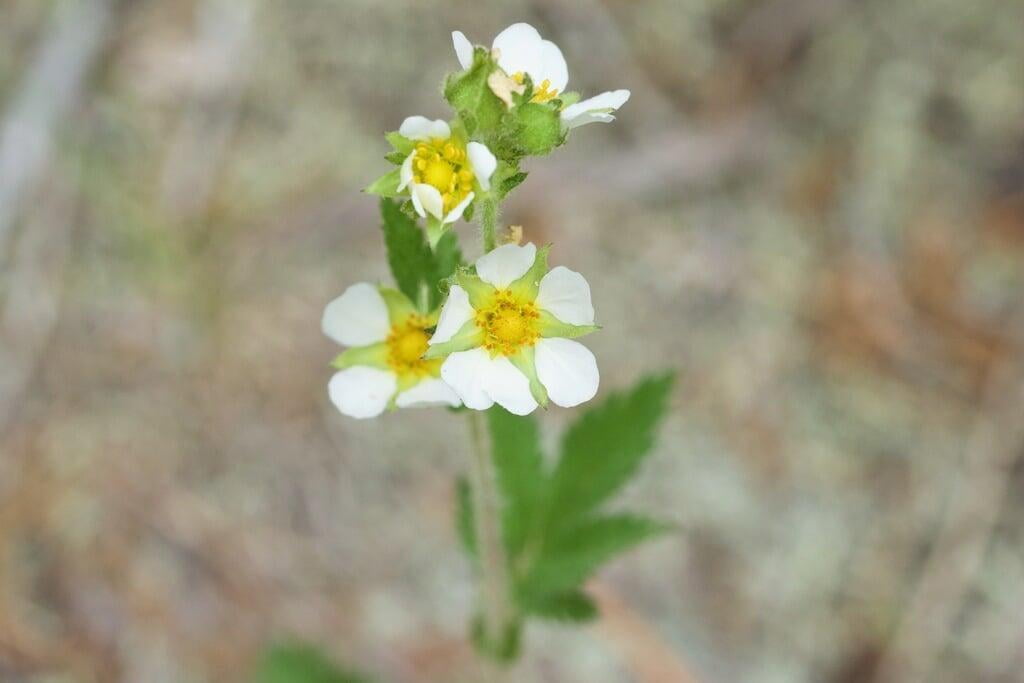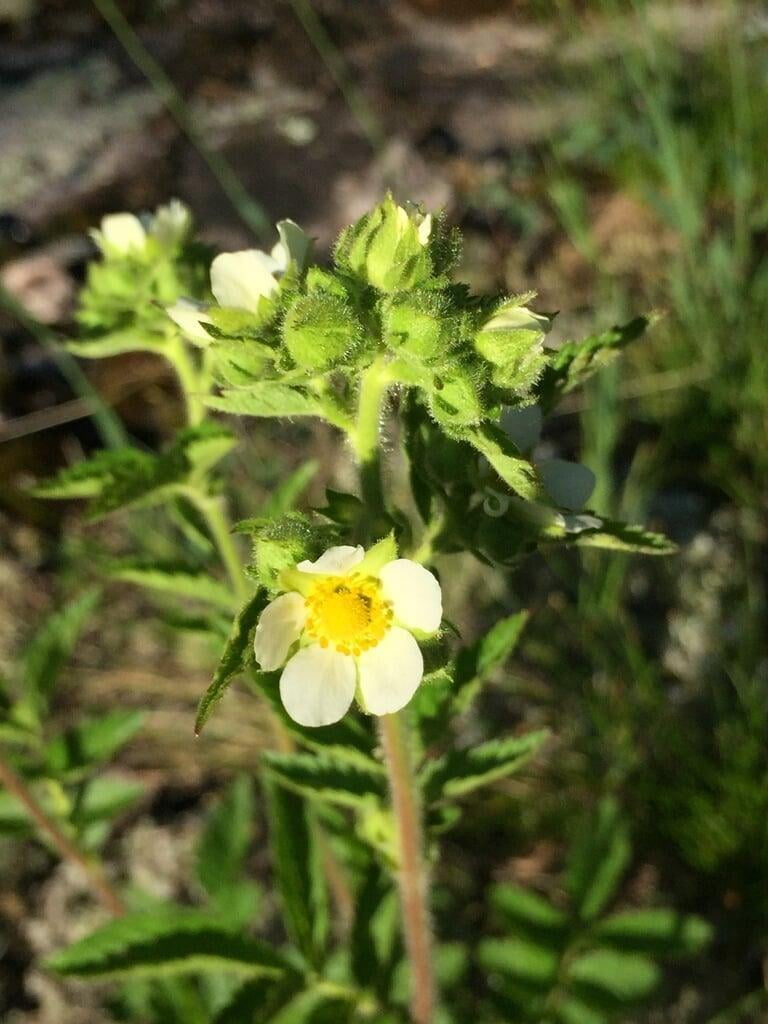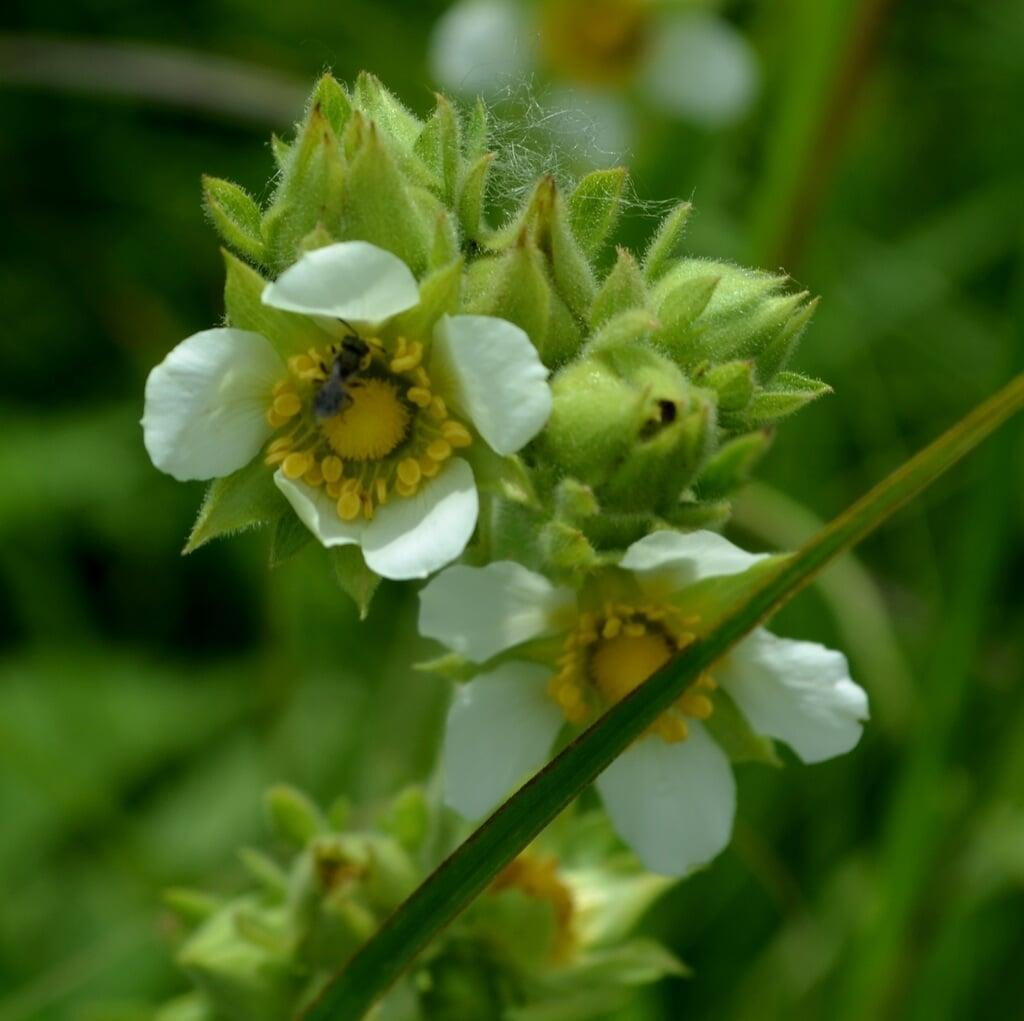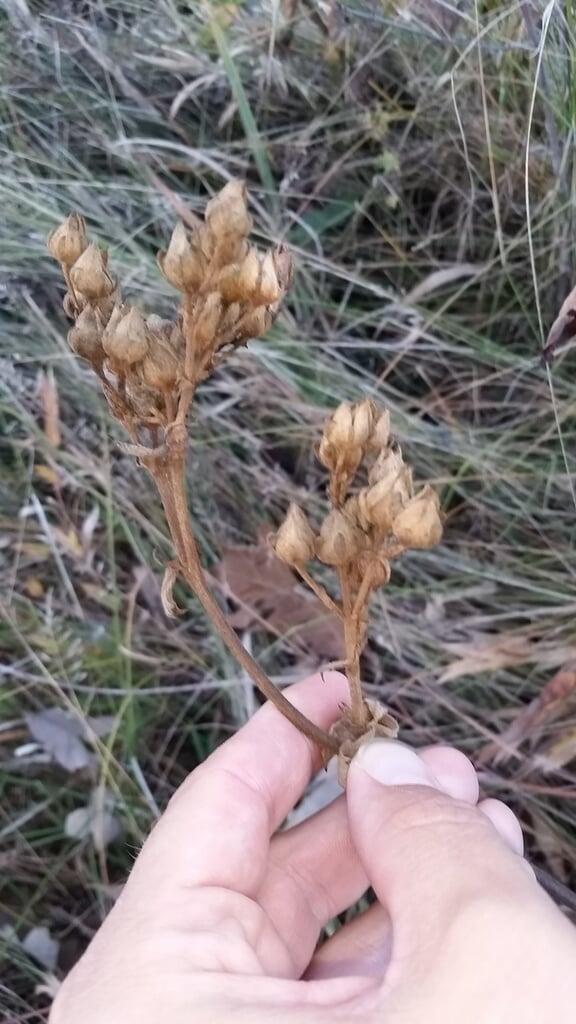Drymocallis arguta
Prairie cinquefoil Description:
Drymocallis arguta, also known as Tall Cinquefoil or Coast Range Cinquefoil, is a flowering plant species native to North America. It belongs to the rose family and is commonly found in mountainous habitats.
Tall Cinquefoil is a clump-forming, herbaceous perennial plant that can grow up to 3 feet tall. The plant has alternate leaves that are deeply lobed and toothed, with a distinctive palmate shape. The flowers of Drymocallis arguta are white to pale yellow in color, and are arranged in loose clusters at the top of the stems. The flowers bloom in late spring to early summer and are attractive to pollinators, such as bees and butterflies.
Drymocallis arguta is a drought-tolerant plant and can be useful in erosion control and as a landscaping plant. It is also well-suited to rock gardens and other dry, rocky areas. The plant has a long blooming period, and its attractive flowers can add color and interest to a garden for several weeks.
Native Range:
Prairie cinquefoil can be found in the north and central United States. Its range spans from Montana across to Maine and down to Arkansas.
Standard Plant Information:
Plant Height: 1' - 3'
Bloom Time: June - August
Preferred Habitat: Does well in part shade to full sun. Often found along woodland edges.
Sowing:
For most homeowners, the best option is to scatter seed on the ground by hand broadcasting at a minimum of 16-64 pls ounces per acre. For even coverage, we recommend that you broadcast seed in perpendicular rows across the site to ensure even coverage.
You’ll want to broadcast any grass seed first, which will get raked into the soil lightly. Next, it is ideal to mulch the area lightly with either a clean (no seed) straw or preferably with our native Little Bluestem straw, sold at our retail garden centers. After a light mulching is complete, now it’s time to broadcast your native wildflower seeds, which should not be raked into the soil. A good rain or watering is sufficient to cover the seed.
Planting:
Simply dig a hole in the soil slightly larger than the plant’s roots. Ensure that the soil line of the plant is maintained during the transfer (i.e. the plant should be at the same level with the ground as it was in the pot). Pack any loose dirt back around the plant and make sure you water it well the same day to ensure it has the best chance of survival.
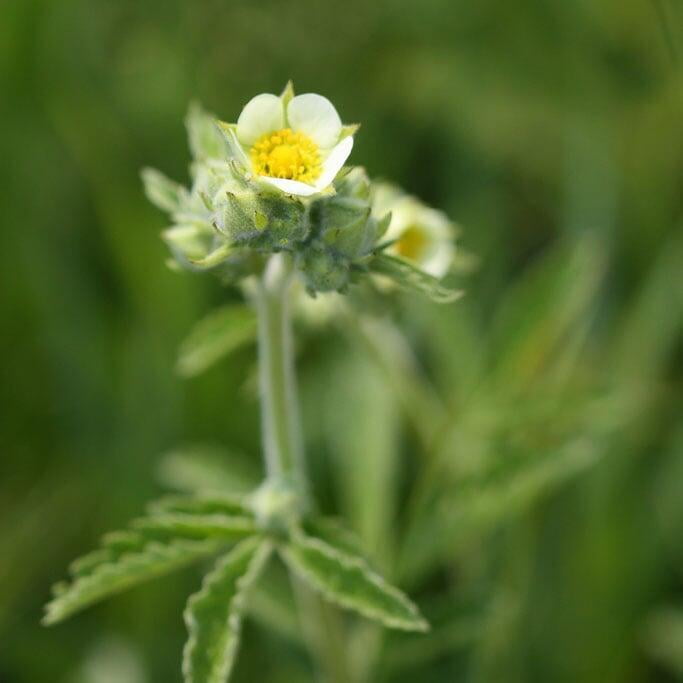
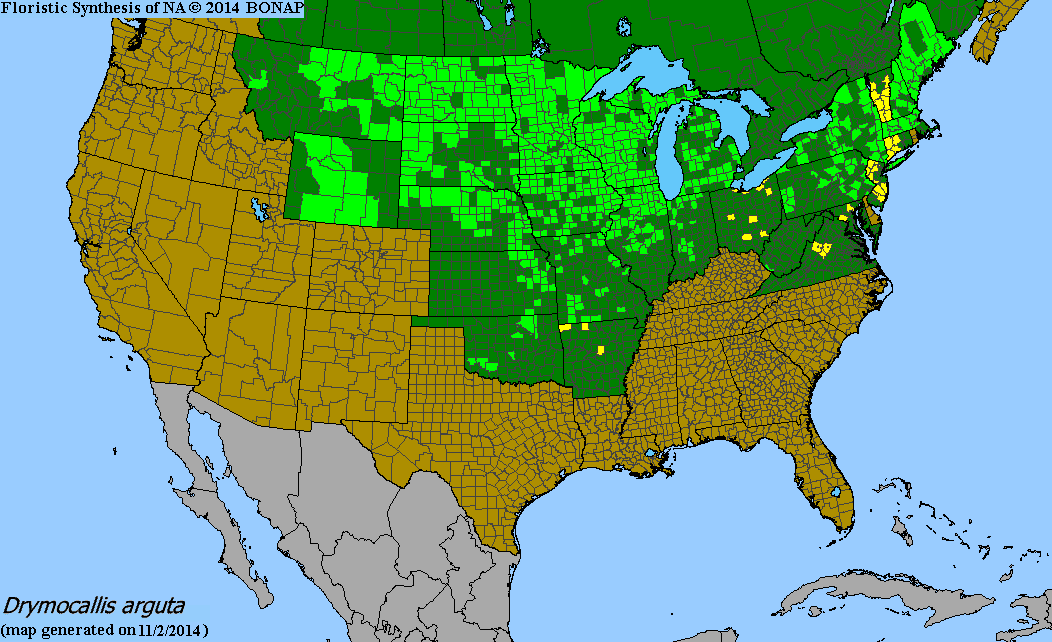
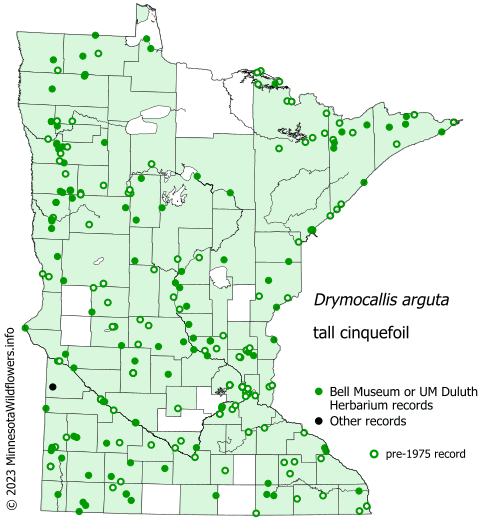
maps used with permission from MN Wildflowers
Drymocallis arguta Gallery
Drymocallis arguta Gallery
